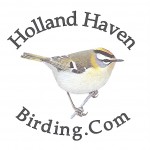The diary of the making of a film. and an on going fascination with birds and their accompanying cast of human characters. By Ceri Levy. Read previous entries, starting here.
Isles of Scilly – part 3, continued.
Sunday October 11th
We’re off to Aggie again to continue the job we had curtailed the day before. Great start to the day, as the one of the boatman who helps everyone onto the boat, is one of the bad dancers from the night before. “Last Night” runs through my head and I would love to sing it to him. He squints at me and I say, “Good night, wasn’t it!” He squints a little more, perhaps wondering what I remember that he doesn’t, breathes in deeply, and grunts in agreement. At least he doesn’t have to pilot the boat, thankfully for us.
St Agnes is a lot of people’s favourite island. I love this place as it has so much varied habitat and is bewitchingly beautiful. Birders and tourists alike are drawn to it. Also, a lot of rare birds do turn up here so it is always worth a bird trip.
On our walk round the island we bump into Jeremy Mynott, the author of Birdscapes, one of my previous books of the month on CBTR. Jeremy is a seasoned Scilly vet, and I love his attitude regarding birding here. From what I can gather as I talk to him, he is happy to be on these mesmerising isles, even with not so many birds about, as he enjoys Scilly for the place itself as much as anyone I know. I get the feeling that Jeremy has been around the bird block and is not easily fazed or upset by this lack of birds, although some feathered arrivals would be most welcome. This is in direct contrast to so many other birders I chat to who moan and curse the rotten good weather and lack of bird stimulation and who are unable to step back and enjoy the extraordinary beauty of their surroundings. I know that, happily, I will never get to this state of bird anxiety.
Rumours abound of a rare bird on St Agnes and someone suggests a Philadelphia Vireo. This is pooh-poohed quicker than the time it takes to say “Philadelphia Vireo” and it is also suggested that the supposed bird was in fact a simple Sedge Warbler. Probably an unfair dismissal but there is no bird now and it’s a dog eat dog world in this birding game. No time for potential stringers, especially when there is only sunshine and no birds, at least where the serious birders are concerned.
Back on St Mary’s and Jim invites me to join him and his six housemates for a Sunday Roast. In return for Jim doing the majority of the cooking, his reward is to have the largest bedroom in the house all to himself. And seeing the chaos created in this small house by seven grown men, it seems a small price to pay, especially as Jim likes cooking, and today’s Roast shows he’s pretty decent at it too. The house is bulging at the seams and I am sure that at night time it would be reminiscent of a First World War hospital scene with camp beds and mattresses strewn through the house, complete with an array of man sounds.
This entertaining motley crew also form a part of the Holland Haven Birders Club, in Essex. They also tell me that their Club’s hide is now made out of old metal cargo containers as the old wooden hides were being burnt down by idiot vandals. Totally tragic, but an original solution to the problem.
It is a stunningly beautiful day, which is again annoying the birders. There has been no adverse weather to bring the birds in. Everyone is waiting for the Yanks, which is a reference to American birds not humans, to be blown off their migratory course.
A birding celebration for me, as I see my 200th bird, a Firecrest, well two Firecrests to be precise, flitting around the Old Town churchyard. I am, of course, laughed nearly right off the island, when I proudly declare my landmark to my mates. I ask when they would take me seriously as a birder and I am told “ it gets serious at about 400”. That is double what I have seen and I have got to 200 because I have seen a lot of the easy common birds. Chastened, I vow to see more. The hard part though is not just seeing more but identifying the bird for myself. Look at a Marsh Tit and a Willow Tit and you will see for yourself it is not easy to discern the difference and that’s while looking at photographs of these two birds. These birds, in the field, are flying around at Mach 8 in between high branches with the sun usually against you, and all alone with no experienced birder’s help at hand. Luckily I have seen these birds with serious birders so they are ticked on my list. But I know that ultimately I have to learn to identify for myself. They say that as you get older languages get harder to learn, well, the language of bird identity is incredibly difficult to master. But I am trying. I just have to find out how far I intend to push myself. I still think I could help myself a whole lot more if I learnt more birdsongs. Then I really would be able to distinguish which bird was skulking in the bushes. Must do better.
